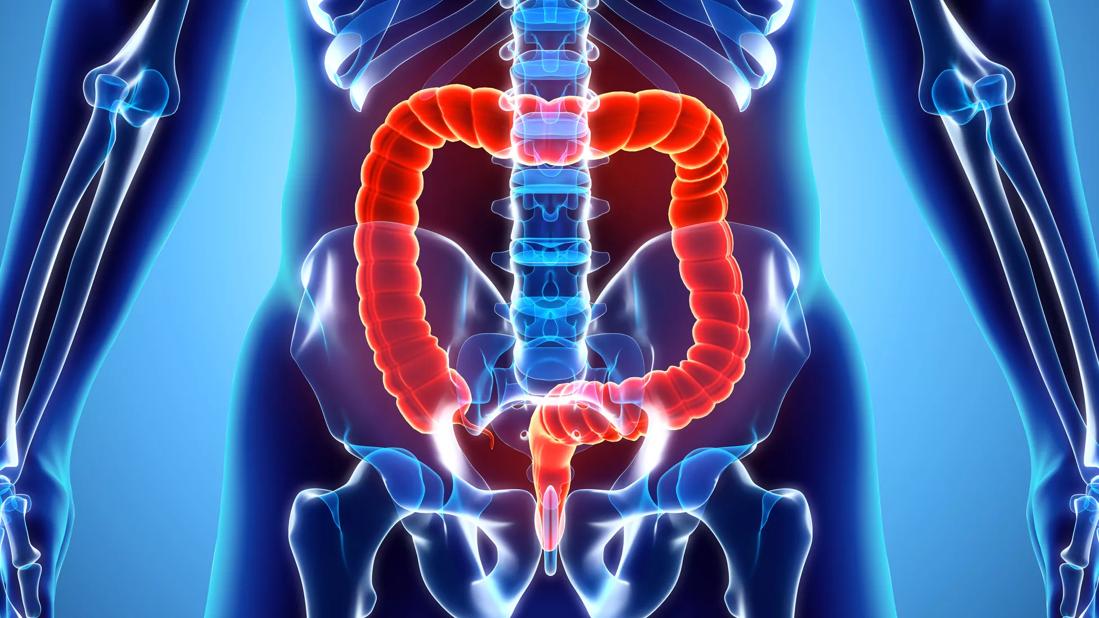First study to show EBD is most effective in patients with fewer strictures

Strictures, the narrowing of the intestines due to inflammation and scarring, are a common complication of Crohn’s disease (CD) that are painful for patients and challenging for physicians. Currently, no stricture treatment is without difficulties: surgical removal of CD strictures has almost double the usual complication rate of other gastrointestinal surgeries in non-CD patients and disease recurrence is common, so surgery often needs to be repeated multiple times. A newer technique, endoscopic balloon dilation (EBD), is less invasive with a lower complication rate but is less effective than surgery. Most patients need repeat procedures and not all have a positive outcome.
Advertisement
Cleveland Clinic is a non-profit academic medical center. Advertising on our site helps support our mission. We do not endorse non-Cleveland Clinic products or services. Policy
To identify which patients would benefit most from EBD, Nan Lan, MD, and Bo Shen, MD, of Cleveland Clinic’s Center for Inflammatory Bowel Disease (IBD) analyzed data from 117 Crohn’s patients treated with primary EBD from 2000 to 2016. The study was presented today at the American Congress of Gastroenterology (ACG) 2018.
Patients were divided into two groups by diagnosis of single or multiple strictures: 81 single and 36 multiple. The latter was defined as more than one stricture dilated during a single endoscopy session.
Of the 117 patients, 56 were male and 61 female. The average age at CD diagnosis was 32.2 years for patients with multiple strictures and 30.9 years for patients with single strictures; the average age at stricture diagnosis was 39.8 years with multiple strictures and 37.5 years with a single stricture. The average length of the strictures was 1.0 cm for multiple strictures and 2.0 cm for a single stricture.
Regarding family history, three patients with multiple strictures and nine patients with a single stricture had a family history of IBD; two patients with multiple strictures and four patients with a single stricture had a family history of colon cancer. All patients were being treated with medical therapy, the majority with corticosteroids. The overwhelming majority of patients were symptomatic (83.3 percent multiple, 90 percent single), with the most common symptom abdominal pain.
The researchers hypothesized that patients with multiple primary CD strictures would have a poor response to EBD. They tested this hypothesis by comparing the outcomes of EBD with single vs. multiple strictures; the primary outcome was resection surgery-free survival and the secondary outcome was post-procedural adverse events.
Advertisement
“At Cleveland Clinic, we’ve performed more EBD procedures than any other institution. Our goal is to delay the need for surgery and reduce the number of surgeries during the life-long course. For patients with aggressive disease, it can help save precious length of the gut,” says Bo Shen, MD, Medical Director of Cleveland Clinic’s IBD Center. “However, in our experience, we’ve noticed that people with multiple strictures don’t respond well to endoscopic balloon dilation, which reflects their disease severity.”
Patients with multiple strictures tended to have shorter and more transversable strictures so immediate technical success was achieved at a rate comparable to patients with a single stricture (97.2 percent vs. 81.5 percent). However, the former group required multiple dilations and had a shorter interval between treatments. Post-dilation perforation was seen only in patients with multiple strictures and post-dilation nausea and vomiting was also seen at a higher rate in these patients.
The subsequent surgery rate was significantly higher in patients with multiple strictures than those with single strictures (66.7 percent vs. 35.8 percent). In particular, patients with more than three strictures treated had a significantly higher risk for subsequent surgery.
Based on these results, Dr. Shen and the Global Interventional IBD group are preparing a position statement for the American Society for Gastrointestinal Endoscopy, “This is the first study to report that three or more strictures predict a poor outcome. Those patients may benefit from upfront surgery, not EBD. On the other hand, in patients with single strictures, EBD should be considered as the first-line therapy,” says Dr. Shen. “This study will change how we manage CD-associated strictures.”
Advertisement
Dr. Shen and colleagues are currently investigating the use of another endoscopic technique – needle knife therapy – to treat primary CD strictures. This technique has the potential to “go beyond strictures to fistulas and precancerous therapy. It is a whole new direction for inflammatory bowel disease,” says Dr. Shen.
Advertisement
Advertisement

Study reveals key differences between antibiotics, but treatment decisions should still consider patient factors

Key points highlight the critical role of surveillance, as well as opportunities for further advancement in genetic counseling

Potentially cost-effective addition to standard GERD management in post-transplant patients

Findings could help clinicians make more informed decisions about medication recommendations

Insights from Dr. de Buck on his background, colorectal surgery and the future of IBD care

Retrospective analysis looks at data from more than 5000 patients across 40 years

Surgical intervention linked to increased lifespan and reduced complications

Diagnostic and management pearls for an emerging condition linking tick-bites to meat allergy